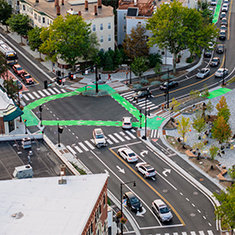
Inman Square (the Square), located in the city of Cambridge, MA, is a bustling commercial and residential community traversed by high volumes of motorists, pedestrians, cyclists and transit users. The intersection of Cambridge Street and Hampshire Street in the heart of the Square presented a complex and unusually large crossing with a confusing layout featuring numerous roadway approaches.
This intersection was a persistent challenge, as the convergence of various modes of transportation has led to conflicts and prolonged delays for all users. Consequently, the intersection earned the designation of a collision hot spot, surpassing the average crash rate for signalized intersections in Massachusetts. The urgency of addressing these issues became essential in 2016 when a tragic incident claimed the life of a bicyclist involved in a collision with a vehicle. Recognizing the pressing need for enhancements, city staff, residents, transportation advocates and community stakeholders identified the safety improvements as a high priority.
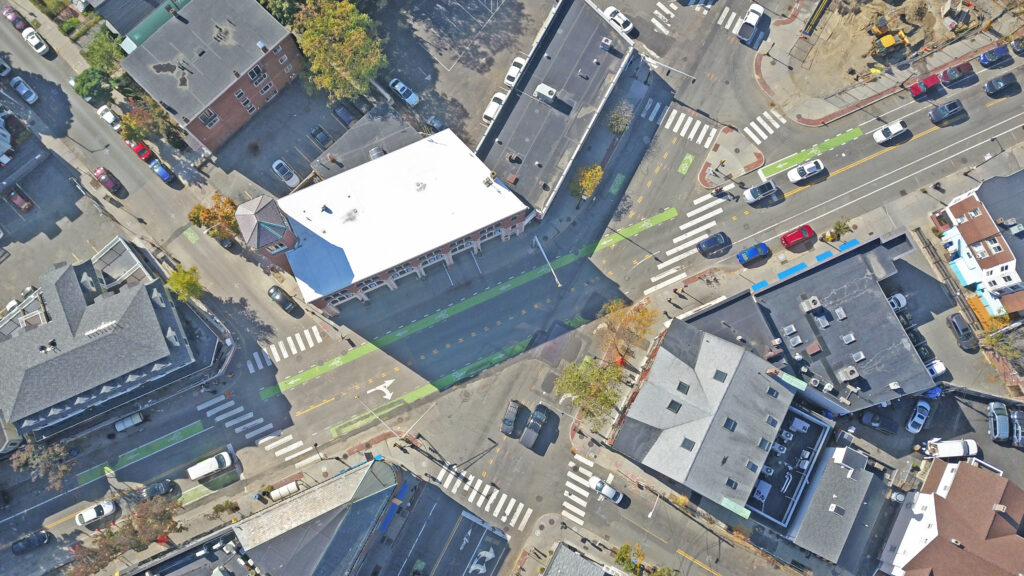
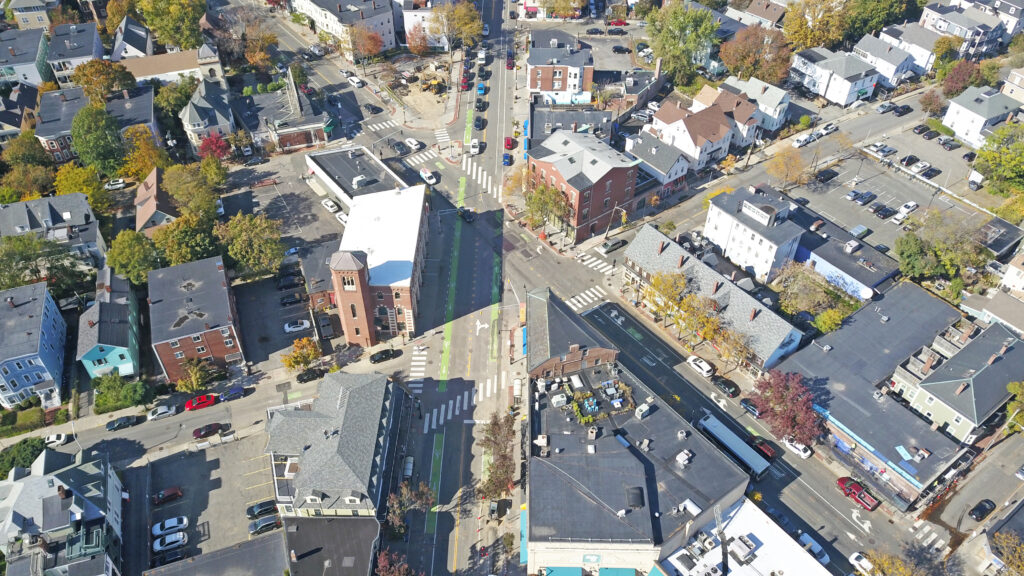
Inman Square before safety improvements.
In 2017, the Kleinfelder-led team was selected for the project through a long-standing, on-call services contract with the City of Cambridge, MA. Bowman was at the forefront of this initiative, leading the multimodal transportation analysis, concept design development, stakeholder engagement, parking utilization study and surface design for multimodal transportation, including the preparation of plans, specifications and cost estimates.
Challenge: Balancing Safety, Sustainability & Community Needs
The improvements needed to align with the city’s commitment to sustainability and Vision Zero, an initiative to eliminate all traffic fatalities and injuries while also increasing safe, healthy and equitable mobility for all. Balancing the demands and preferences of residents, business owners, bicycle transportation advocates, emergency responders and other stakeholders required a comprehensive improvement plan, which needed the backing of the community and their elected officials.
Solution: Comprehensive Design & Engagement
Given the significant public interest in the project, transparent and frequent communication was paramount. The project team employed a variety of materials, including graphics, images, traffic simulation, renderings and 3D models to convey information effectively. This audience encompassed individuals with varying levels of understanding of engineering and traffic principles, English-speaking proficiency and access to the internet.
To aid communication and visualization, VISSIM, a multi-modal traffic flow microsimulation software, was used. This tool not only assisted in traffic engineering and intersection design but also provided a user-friendly, video game-like format for engaging with the community and stakeholders.
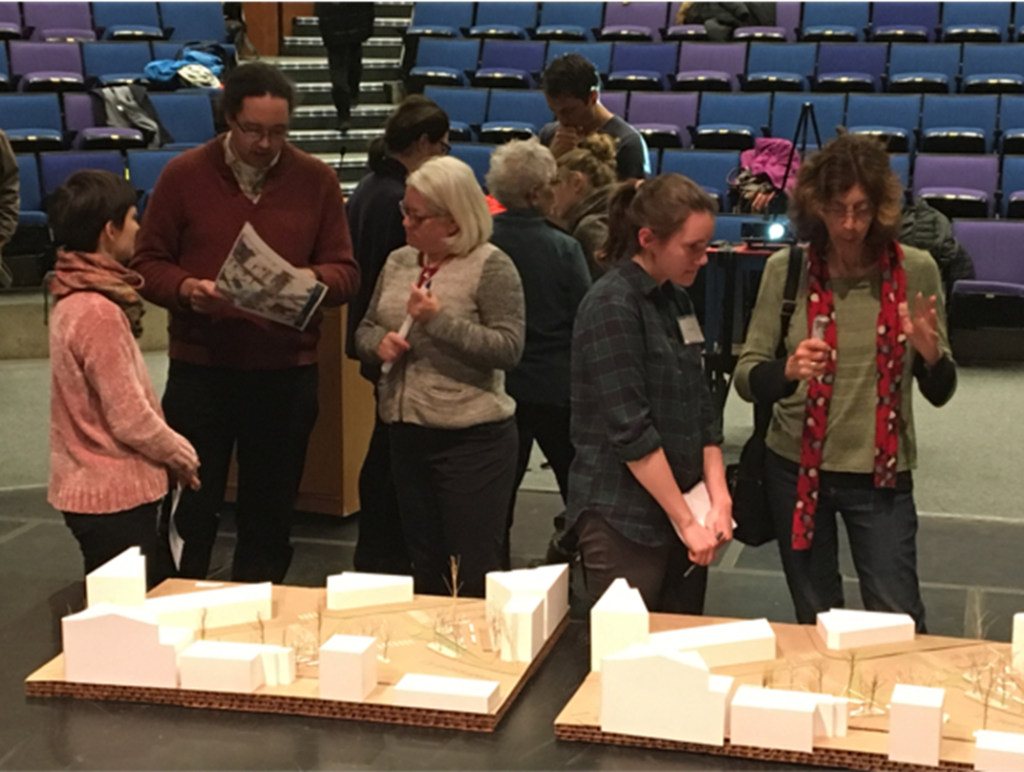
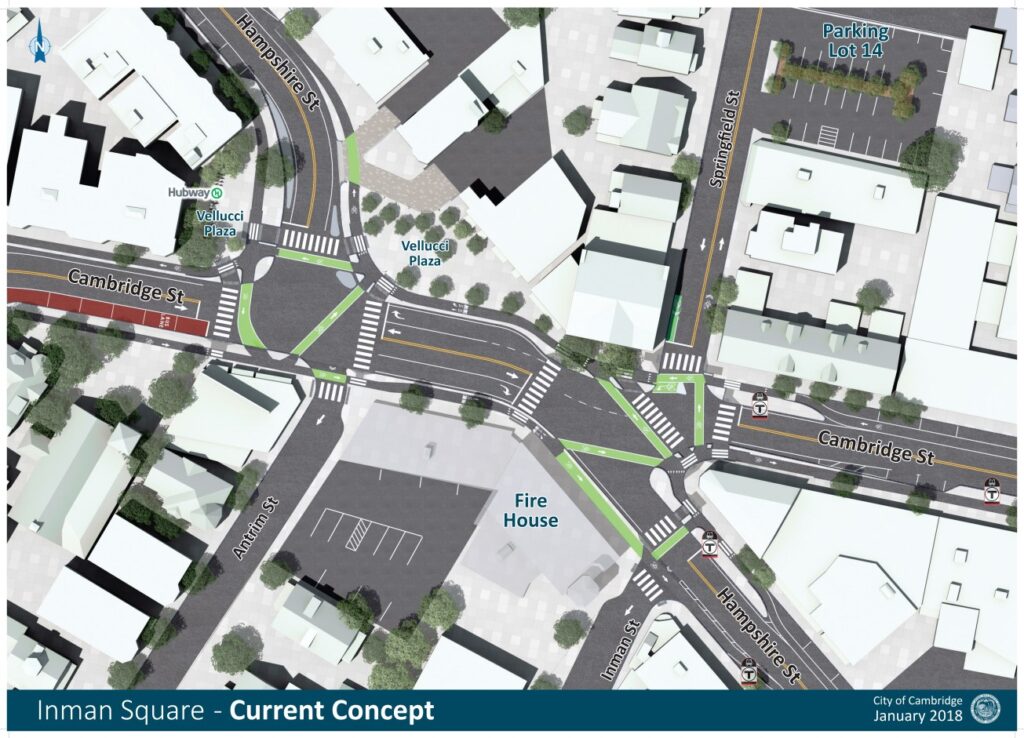
Using 3D models & graphics to convey information to the community.
The project team designed three intersection concepts based on community concerns. These designs were then analyzed from a transportation and spatial perspective. The visioning process was underpinned by a strong engineering foundation, ensuring the practicality and effectiveness of the proposed changes. Each of the design concepts included sidewalk-level separated bicycle lanes, enhanced bus stops and improved pedestrian crossings.
Impact: Safe, Accessible & Sustainable Transportation for All
The skewed intersection at Cambridge Street and Hampshire Street was reconfigured into two separate intersections. Additional safety improvements included sidewalk-level separated bicycle lanes with protected phasing, fully accessible sidewalks and crossing islands, floating bus stops and a transit queue-jump lane. The project also reconfigured Vellucci Plaza to create a public gathering place with seating and a public art installation.
Community input was instrumental in revealing the need to enhance the quality and character of the Square and open spaces. The project also accounted for essential truck and fire department access, integrated climate residency measures and advanced the city’s bicycle plan.
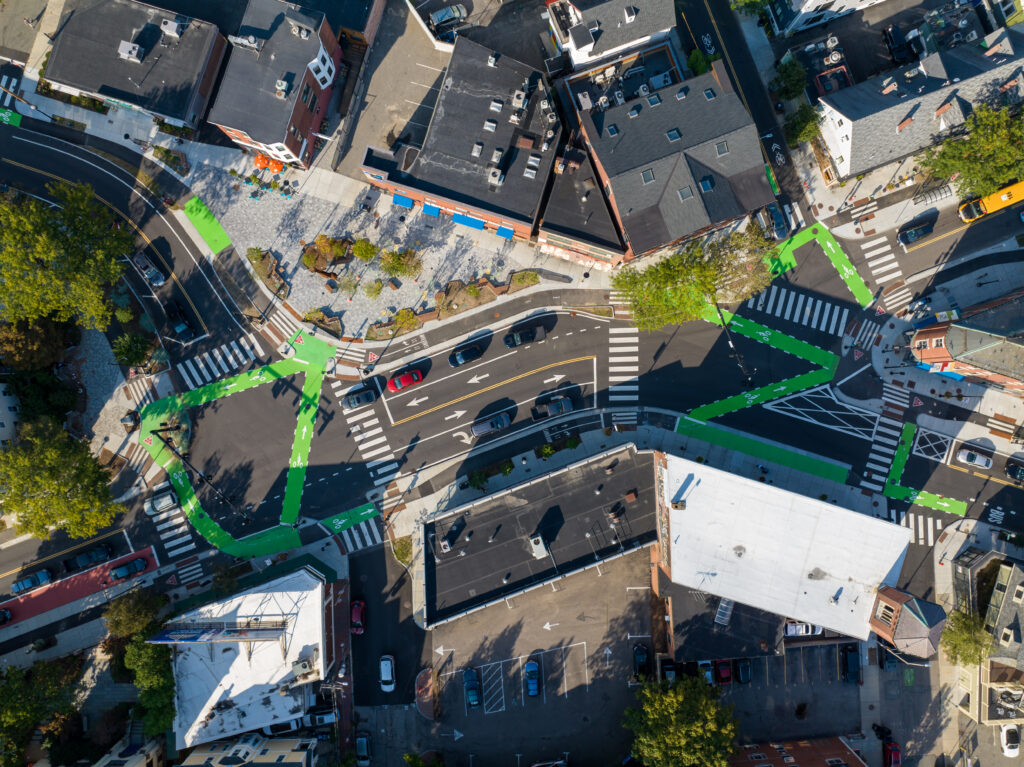
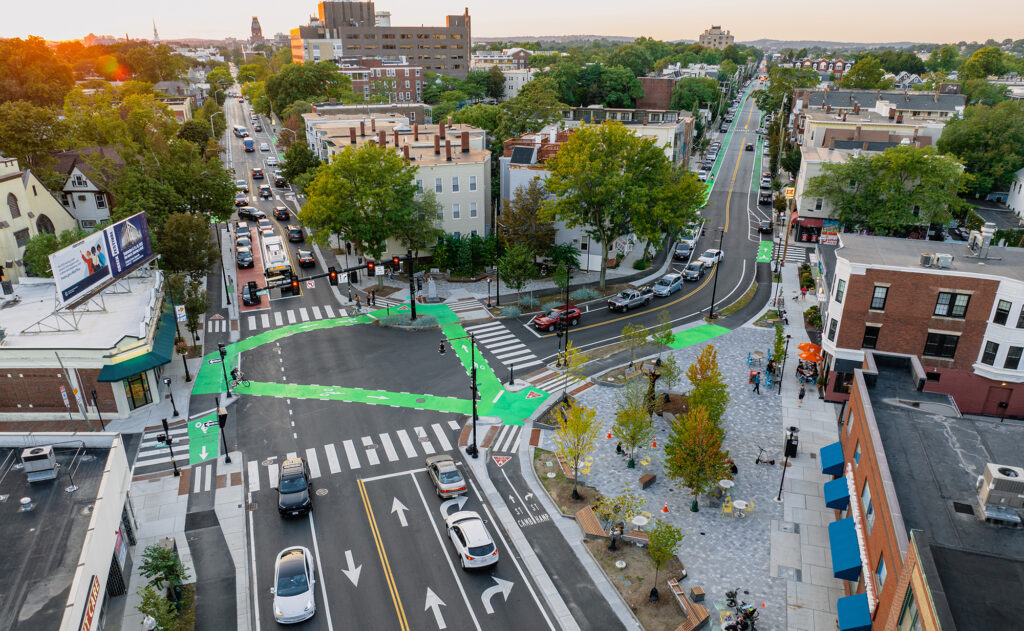
Inman Square after safety improvements.
Operational transportation improvements also provided environmental benefit due to reduced vehicular idling time at the intersection during a signal cycle at peak hour conditions. With the design in place, vehicular idling time is reduced by 29 seconds per day during peak morning and evening hours, which results in a combined vehicular reduction of 69 metric tons of CO2 per year.
The Inman Square safety improvement project demonstrates that planners and designers can undertake transformative urban design projects and successfully move to implementation with the help of local communities. Their voices can be the impetus for imagining how a familiar and historical place can be reimagined to improve infrastructure and safety.
People for Bikes ranked Inman Square #4 on their list of Best New US Bike Lanes of 2023.
Project team: Kleinfelder served as the lead engineer and designer. Klopfer Martin Design Group facilitated public engagement and public plaza design and Toole Design served as a walking and biking advisor.



